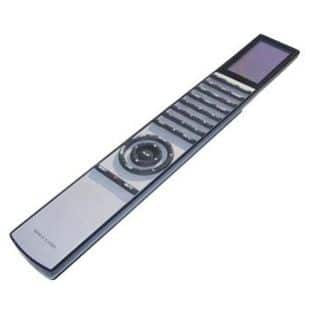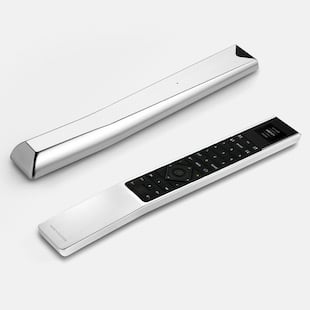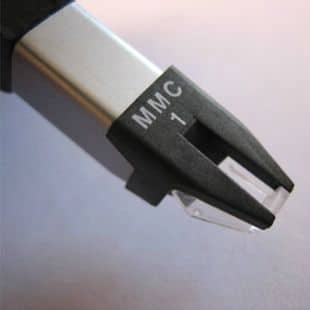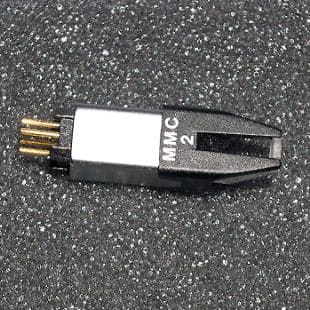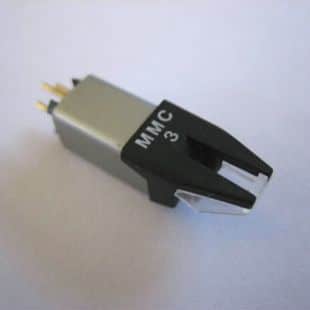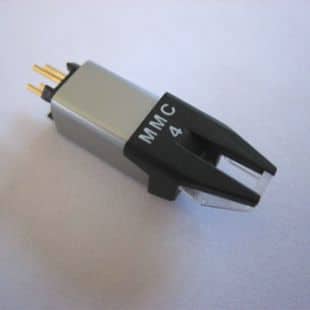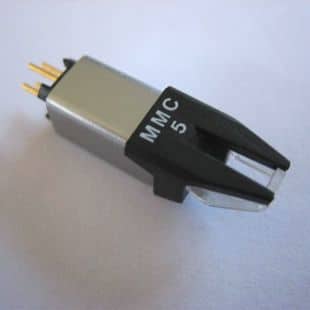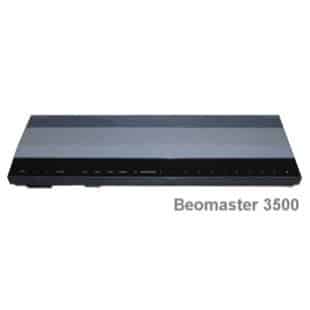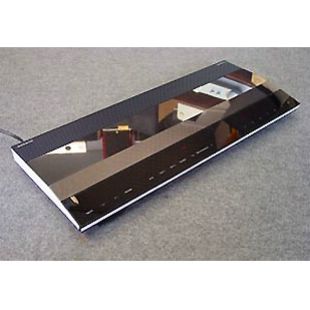BeoSystem AV 9000
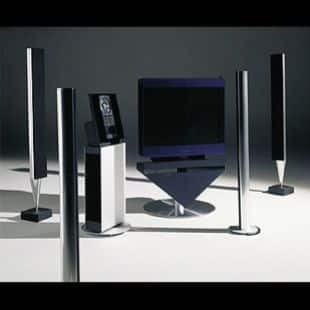
Bang & Olufsen’s Beosystem AV 9000 was a complete home theatre system introduced in 1992 and was designed by the company’s chief designer, David Lewis. The superlative system – in production for seven years – comprised a Beovision AV9000 TV set, a pair of BeoLab 8000 speakers, a pair of BeoLab 6000 speakers, and a Master Control Panel AV9000, similar to a BeoSound Ouverture. In addition, Beovision AV9000 contained not just the television, but also a Dolby Surround Sound processor, a modified Beocord VX7000 and an active centre speaker.
Beosystem AV 9000 was, in the early 1990’s the most advanced combination of sound and vision from Bang & Olufsen and was the B&O approach to complete home entertainment. The TV, video and music system used the same set of loudspeakers, so the sound always comes as close to reality as possible. AV 9000 gave you the freedom to choose one of five different sound-settings for every audio/video source – ranging from Dolby Surround Sound to monologue newsflash. Surround Sound was built into the AV 9000 monitor-unit, while the CD, radio and cassette was handled by BeoSound Ouverture, all seamlessly connected to each other. The whole system was surrounded by two set of loudspeakers: tall, slender BeoLab 8000 in front and BeoLab 6000 at the rear. A fifth source was the central loudspeaker in the triangular bottom-half of the television set. The whole system was controlled by one remote control, the Beo4.
Today it is relatively easy to build a television. But at Bang & Olufsen the company is more committed to bring customers the best possible experience. VisionClear is a simple name for a list of advanced electronics which the viewer experiences, but hardly notices, simply because they work. Automatic picture control, current colour balance correction, automatic cut-off and fine tuning of the aerial signal and a contrast screen.
If you often watch television during the day, you will recognise the problem of carpets, furniture and other home furnishings reflecting in the screen. The solution to this problem is an ultra-thin coating on the contrast screen, which reduces reflection by 90% and makes the black areas appear pitch black.
The anti-reflective contrast screen is standard on the Beovision Avant and was supplied as standard on the Beosystem AV9000. On the AV 9000 even the picture tube was coated with anti-reflective material to ensure 100% reflection-free viewing comfort.
A small electronic sensor in all Beovision TV sets registers the prevailing light conditions in the room and adjusts the picture, so that it’s always sharp, no matter whether a reading lamp is on or the rays of the sun suddenly breaks through the window. Automatic Picture Control is part of the VisionClear concept and only available on televisions available from Bang & Olufsen.
Bang & Olufsen’s products are enchanting! And the magic, the good idea, often comes into being in the course of finding a solution to some practical problem. The practical problem here was that there was a short time lag between pressing the button and a picture appearing on the screen. So you would sit and wait expectantly for a little while.
The experience of waiting reminded designer David Lewis of a theatre before the curtain went up! Behind the curtain, preparations were being made for the performance. The lighting and sound were adjusted and the actors took their places. The curtain only went up when everything was ready. The first television to have a curtain was Beovision AV 9000. The curtain was a thin steel sheet that was slid to one side by a clever mechanism when the stage was set. Bang & Olufsen’s wide-format television, the Beovision Avant, is equipped with an electronic curtain. From the moment you press the button until the curtain slides away, the technology is busily working unnoticed. No pop from the loudspeakers, no random flash of light from the screen. Only when the sound is ready and the picture is in place can the performance begin!
A brilliant problem
We all know the frustration of trying to watch television in daylight when the brilliance of a window reflection on the picture tube makes it impossible to see a part or all of the picture. This also happens to a smaller degree when light-coloured furniture or a lamp is reflected. In general, reflections lower the quality of the picture on a television screen and reduce the pleasure of watching a TV programme.
The optical process of what happens in such a case is that the contrast of the picture is effectively reduced. The Bang & Olufsen solution to the problem has traditionally been to incorporate a contrast screen. Ensuring that ambient light (which creates the reflections) travel twice through a light absorbing contrast screen whereas the picture formed in the picture tube travels only once, the brightness of the reflection is substantially reduced.
If it were possible, a better solution would be to reduce reflections directly. One method is to make the surface of the picture tube rough, either by sanding or etching the front surface of the tube or spraying a matt coating on the glass. This type of treatment does not actually reduce reflections, but by making reflections more diffuse, reduces their visibility. However, it also makes the picture itself fuzzy and less sharp, so that the overall quality is reduced.
A more attractive method is to use coatings. Coatings for glass surfaces have been used for a long time and for many purposes. The first use was probably for camera lenses, where coatings corrected for optical faults in the lens. Later, coatings were used to reduce reflections and also to correct colour reproduction when colour films became available. Most people will know of coatings from the more expensive spectacles, where coated glass is used to reduce reflections.
Anti-reflection coatings can reduce reflections to between 5% and 10% of their original brightness. They work by what is known as destructive interference and use the fact that light travels in waves of specific wavelengths. By coating the picture tube or other glass surfaces with a transparent layer of a thickness of one quarter of the wavelength of light, the light failing on the surface is reflected twice – once from the front surface and again from the rear surface of the coating. The two reflections are now half a wavelength apart and therefore in opposite phase and thus virtually cancel each other to destroy the reflection.
Of course, this happens perfectly for just one wavelength of light (or light of a single colour) and to lesser degrees for the wavelengths close to this. By adding more than one coating of different thicknesses, a more broadband removal of reflections can be achieved. Thus, for example, three coatings are used for the front screen of the Beosystem AV9000. One of the reasons that antireflection coatings are not used more often is that currently the manufacturing process is extremely expensive for large screens, allowing its use only in high-end television sets. However, as it is considerably less expensive for small screens, especially where only a single coating is used, it is a reasonably popular feature for computer monitors.
One of the features of coated picture tubes is that although reflections are drastically reduced, the coated glass appears to have a residual colour. This happens because some light is still reflected from the surface, the colour of which depends on the number and thickness of the layers. The colours that are not perfectly removed result in the colouring of the glass. This does not affect the colours of the picture, which is viewed through the coating and does not depend upon its thickness.
Also, the effectiveness of the anti-reflection coatings falls off at an angle to the screen, as the effective thickness of the coating changes. Seen from an angle, the colour of the reflections changes for the same reason.
The AV9000 also uses another coating, a thin layer of chrome on the back of the contrast screen. This is an anti-static layer, which is earthed to prevent the build-up of static charge, which can give problems with electrostatic shock. An appealing side effect of the anti-reflection coating of the AV9000 is that when the black curtain behind the contrast screen is closed, the effect of the coating is apparently considerably reduced, so that the whole screen surface appears to reflect. As soon as the curtain is removed, the anti-reflection coating takes full effect, forming a window in which the brightness of reflected light is reduced.
“There was a time when people bought TV and radio in order to keep informed. Today, TV and radio have developed into entertainment media, and here at Bang & Olufsen, we are convinced that this trend will continue. At any rate, that is the reason for what is perhaps our greatest innovation yet.
Beosystem AV 9000 is not just an independent video system and independent music system. It is an epoch-making combination of picture and sound options contained within an exciting Dolby Surround System. What is Dolby Surround anyway?
You have probably had the experience of sitting in a cinema, where the film was so real you almost ducked at the sound of horses’ hooves approaching your seat. That is Dolby Surround. With Beovision AV9000, you can benefit not only from film, but also from the many televised recordings and sports events that are produced and transmitted today with Dolby Surround.
Technically, Dolby Surround is created with the help of three front and two rear speakers. By delaying the sound in the rear speakers relative to the front speakers, you get a three-dimensional sound picture, and suddenly you are in the midst of a giant soccer stadium, a concert hall, or the action of a film. I am not exaggerating when I say that even in smaller rooms, Dolby Surround is incredible.
However, it is one thing to have cinema experience at home in your living room. The other side is that when we developed AV9000, we wanted to make sure that your living room wouldn’t look like a cinema when no one was using the system. Every element is designed to be a beautiful part of the rest of the decor of the room. Otherwise, it wouldn’t be Bang & Olufsen.“
Movies no longer have to be seen in the cinema. With Dolby Surround and Bang & Olufsen active loudspeaker technology it is possible to create a sound environment that even surpasses that of cinema. The technology makes sound so pure, that it can be called natural – just the same that you would hear in a concert hall. With the AV9000 Bang & Olufsen achieved the goal of perfect sound. But, this was only one half of the secret of reproducing cinema in your living room. The other half is gained when you give Bang & Olufsen’s engineers free hand in pursuit of the perfect picture, achieved in the monitor of Beosystem AV 9000.
The built-in video tape recorder had the same capability and operations as Beocord VX7000. The VCR was PAL/NTSC compatible and discreetly hidden from view, unlike a normal free-standing recorder. Together with the active central loudspeaker, it was positioned in the triangle below the 66cm 4:3 screen. The location of the speaker enhanced the impression that the voice came directly from the screen. To direct the voice to face your sitting position, the monitor could be turned 33 degrees to both the left and right by operating its motorised stand with the Beo4 remote control. As all B&O motorised stands, movement of the monitor was entirely soundless.
Perhaps the first thing that the viewer noticed upon looking at the set, was that there appeared to be no screen! Just like in the cinema, the screen was only revealed when the mechanical curtains parted. When the TV was turned on, a black, completely light-resistant curtain glided to the left and right to reveal the picture, creating further the illusion of a small cinema screen. At the same time the monitor turned toward you to its pre-set position. The picture was incredibly sharp, with deep and clear colours.
Beosystem AV 9000 was more than a music system and more than a video system. It was an integrated approach to home entertainment, which fitted unobtrusively into any living room. The polished aluminium surfaces of the active BeoLab 8000 and BeoLab 6000 speakers took on the colours of their surroundings, while the black cloth covers blended in with outmost grace. In regard to sonic qualities, the loudspeakers are still second to none.
Carlton Sarver, a writer specialising in audio and video, with life long experience within the development of electronic media in Europe as well as the USA concluded that “I feel free to give unrestrained opinion of the Beosystem AV9000 in the larger context of integrated audio-video systems. Which is, that somebody finally got it right”.
The Master Panel AV9000 – or MPAV 9000 – was the ‘audio source module’ designed especially for the AV9000 system and was very similar in appearance to the BeoSound Ouverture. The earlier types of AV9000 were sold with the module and used four active speakers to create a full surround system. It used the Beolink 5000 or Beolink 7000 as a remote and was a two-way system. This was replaced when the system was updated to use the Beo4 remote control and the Master Panel was replaced with the Ouverture.
Besides its ability to play music sources, the Master Panel – as its name implies provided the user with a control interface for the entire Beosystem AV9000. This meant, for example, that it could be used to search, play and rewind all the sources in the system. At the approach of a hand the tinted glass doors automatically slid open and the panel lit up. For CD play, a touch of a button caused the CD player’s motorised clamp to lift upward for convenient loading. At another button touch the clamp moved into place, holding the CD in precise position for play. Tracks could be programmed to play in any sequence, using a Beolink 5000 terminal.
The cassette deck offered the same playback convenience as a CD. Sequential track numbers were automatically assigned to selections on a cassette. Any track on a cassette could be quickly located, simply by entering the track number. Playback in any sequence could be programmed. HX-Pro – a headroom extension system developed by Bang & Olufsen and licensed to Dolby Laboratories – was standard. It secured that high music frequencies were optimised during the recording process.
Bang & Olufsen’s microcomputer-based Auto Record Level controlled the recording level more accurately than would be possible manually. Because it subtly reduces recording level when required, never increasing it, its action is virtually undetectable.
The FM/AM tuner incorporated Bang & Olufsen’s developments that increased sensitivity, selectivity and tuning stability. Its use was exceptionally easy. Touching a station preset button – on either the Panel or the Beolink 5000 terminal – caused that station to instantly start playing, even if the system had previously been turned off. With an optional RDS decoder, FM station identification was automatically displayed on the Panel. Users could also manually name individual FM or AM presets.

